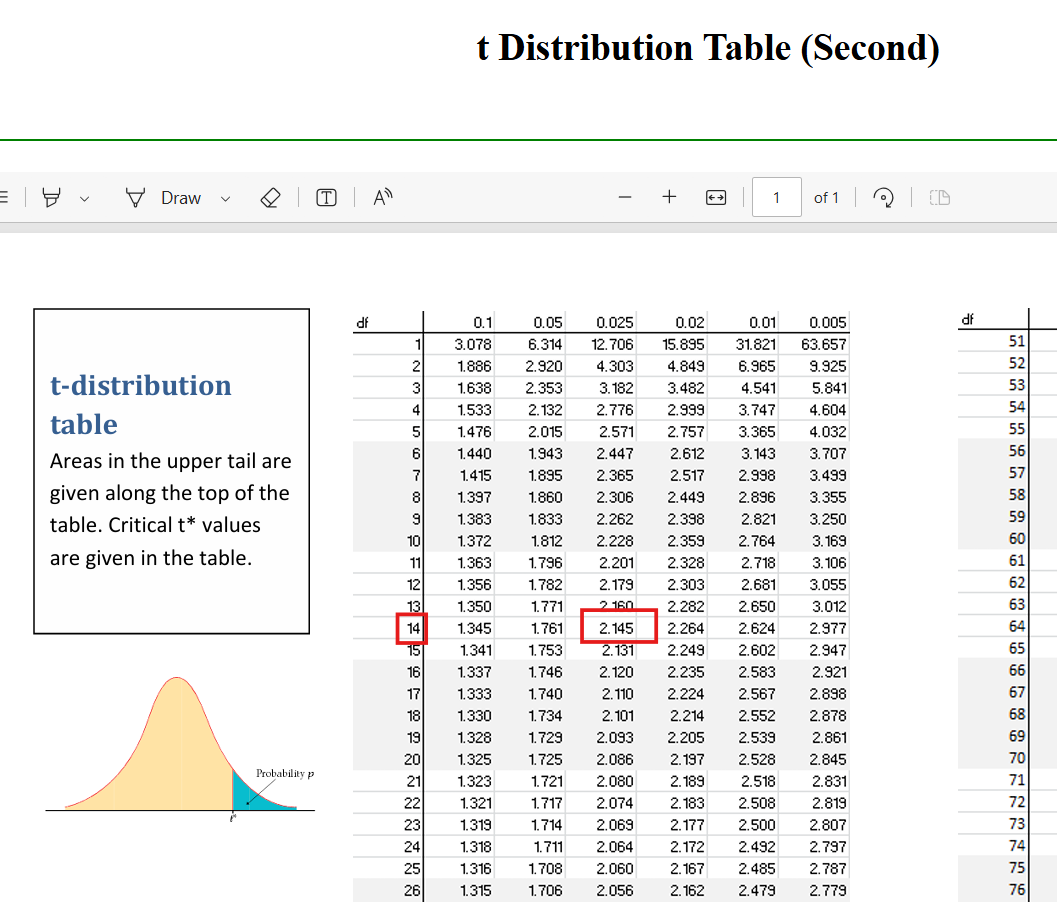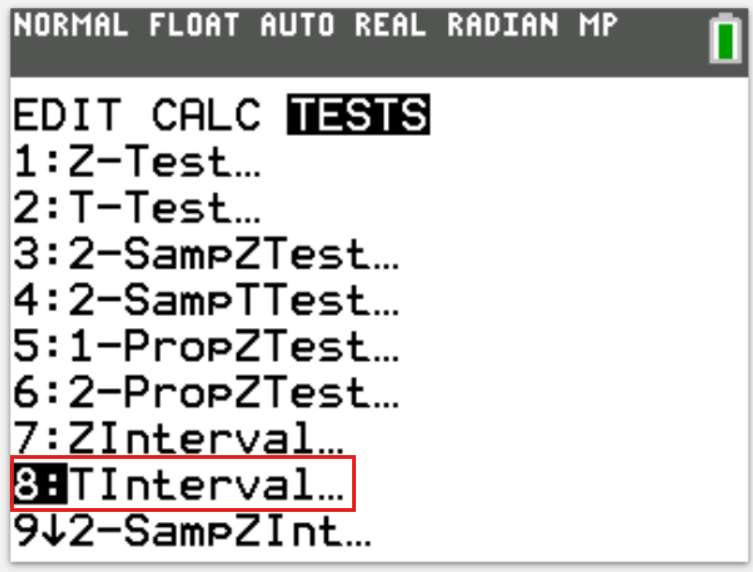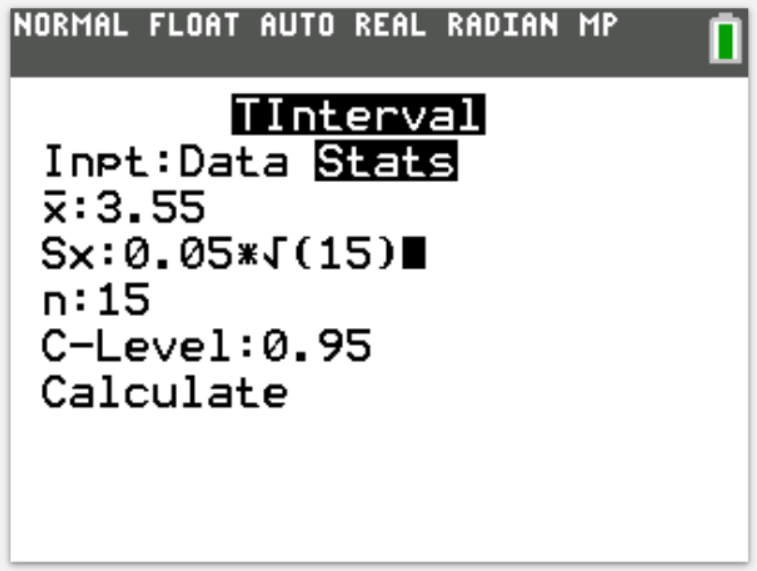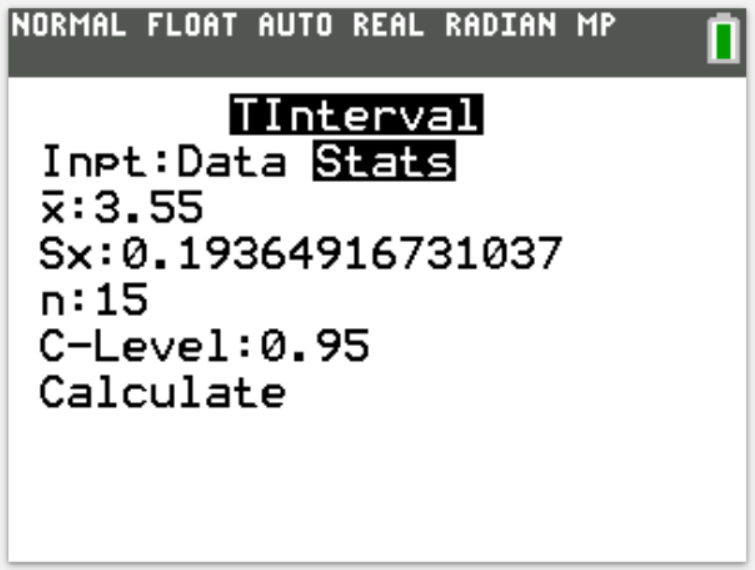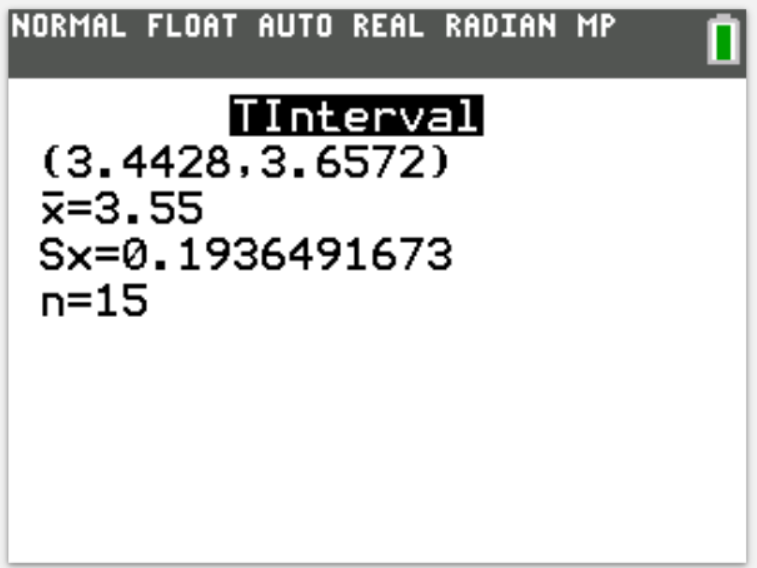(3.) Determine the t-values such that:
(a.) The area in the right tail is 0.025 with 25 degrees of freedom.
(b.) The area left of the t-value is 0.25 with 28 degrees of freedom.
(c.) Critical t-value that corresponds to 98% confidence level with 7 degrees of freedom.
$ (a.) \\[3ex] One-tailed\;\;(Right-tailed) \\[3ex] \dfrac{\alpha}{2} = 0.025 \\[5ex] df = 25 \\[3ex] Critical\;\;t-value = 2.0595 \\[3ex] $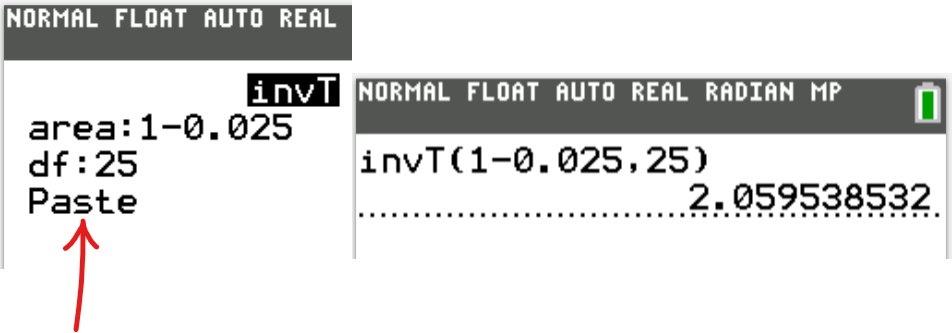
$ (b.) \\[3ex] One-tailed\;\;(Left-tailed) \\[3ex] \dfrac{\alpha}{2} = 0.25 \\[5ex] df = 28 \\[3ex] Critical\;\;t-value = -0.6834 \\[5ex] (c.) \\[3ex] CL = 98\% = 0.98 \\[3ex] \alpha = 1 - 0.98 = 0.02 \\[3ex] This\;\;could\;\;mean: \\[3ex] (i.)\;\;Two-tailed\;\;test \\[3ex] \alpha = 0.02 \\[3ex] df = 7 \\[3ex] Critical\;\;t-value = \pm 2.9980 \\[3ex] (ii.)\;\; One-tailed\;\;(Right-tailed) \\[3ex] \dfrac{\alpha}{2} = 0.02 \\[5ex] df = 7 \\[3ex] Critical\;\;t-value = 2.9980 \\[3ex] (iii.)\;\; One-tailed\;\;(Left-tailed) \\[3ex] \dfrac{\alpha}{2} = 0.02 \\[5ex] df = 7 \\[3ex] Critical\;\;t-value = -2.9980 $
(a.) The area in the right tail is 0.025 with 25 degrees of freedom.
(b.) The area left of the t-value is 0.25 with 28 degrees of freedom.
(c.) Critical t-value that corresponds to 98% confidence level with 7 degrees of freedom.
$ (a.) \\[3ex] One-tailed\;\;(Right-tailed) \\[3ex] \dfrac{\alpha}{2} = 0.025 \\[5ex] df = 25 \\[3ex] Critical\;\;t-value = 2.0595 \\[3ex] $

$ (b.) \\[3ex] One-tailed\;\;(Left-tailed) \\[3ex] \dfrac{\alpha}{2} = 0.25 \\[5ex] df = 28 \\[3ex] Critical\;\;t-value = -0.6834 \\[5ex] (c.) \\[3ex] CL = 98\% = 0.98 \\[3ex] \alpha = 1 - 0.98 = 0.02 \\[3ex] This\;\;could\;\;mean: \\[3ex] (i.)\;\;Two-tailed\;\;test \\[3ex] \alpha = 0.02 \\[3ex] df = 7 \\[3ex] Critical\;\;t-value = \pm 2.9980 \\[3ex] (ii.)\;\; One-tailed\;\;(Right-tailed) \\[3ex] \dfrac{\alpha}{2} = 0.02 \\[5ex] df = 7 \\[3ex] Critical\;\;t-value = 2.9980 \\[3ex] (iii.)\;\; One-tailed\;\;(Left-tailed) \\[3ex] \dfrac{\alpha}{2} = 0.02 \\[5ex] df = 7 \\[3ex] Critical\;\;t-value = -2.9980 $
(4.) Determine whether the interpretation is valid or invalid.
A tire manufacturer wants to examine the durability of its new product.
Company engineers randomly selected 175 new tires and measured the number of kilometers each can drive before blowing out.
The engineers found a 95% confidence interval of (18157.6, 18522.6) for the mean distance their new tires can drive before blowing out.
If 100 more samples are taken (with elements chosen randomly and independently), it is expected that exactly 100 of them will each produce a 95% confidence interval that contains its sample mean.
The interpretation is valid.
If 100 more samples are taken (with elements chosen randomly and independently), it is expected that exactly 100 of them will each produce a 95% confidence interval that contains its sample mean.
A tire manufacturer wants to examine the durability of its new product.
Company engineers randomly selected 175 new tires and measured the number of kilometers each can drive before blowing out.
The engineers found a 95% confidence interval of (18157.6, 18522.6) for the mean distance their new tires can drive before blowing out.
If 100 more samples are taken (with elements chosen randomly and independently), it is expected that exactly 100 of them will each produce a 95% confidence interval that contains its sample mean.
The interpretation is valid.
If 100 more samples are taken (with elements chosen randomly and independently), it is expected that exactly 100 of them will each produce a 95% confidence interval that contains its sample mean.
